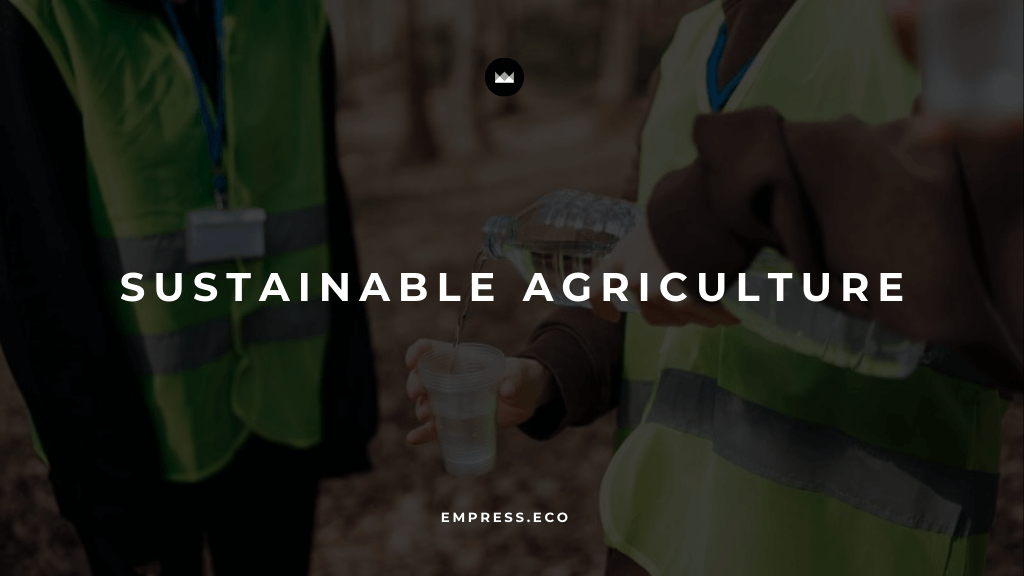
Nourishing the Future: How Sustainable Agriculture Can End Hunger
Understanding SDG 2 – Zero Hunger and the role of sustainable farming in food security.
Table of Contents
The global challenge of ending hunger is more pressing than ever. Despite advancements in agriculture and food production, hunger and food insecurity continue to rise, exacerbated by climate change, population growth, and socio-economic inequalities. Sustainable agriculture emerges as a crucial strategy to address these issues and achieve Sustainable Development Goal 2 (SDG 2) – Zero Hunger. This blog explores how sustainable farming practices can ensure food security and nourish future generations.
The Current State of Hunger
Hunger remains a significant global issue, with over 690 million people going to bed hungry every night as of 2020. The United Nations reports that more than 790 million people worldwide still suffer from hunger, and nearly 2.4 billion people experienced moderate to severe food insecurity in 2022. If current trends continue, the zero hunger target will be missed by 2030. The persistence of hunger is often due to natural and human-induced disasters, political instability, and economic disparities, particularly in sub-Saharan Africa and Southern Asia.
The Role of Sustainable Agriculture
Sustainable agriculture refers to farming practices that meet current food needs without compromising the ability of future generations to meet theirs. It involves techniques that protect the environment, enhance soil fertility, and promote biodiversity. Here are some key strategies:
1. Conservation Practices
Conservation practices such as crop diversification, drip or sprinkler irrigation, zero-soil tillage, and growing crops that rely less on nitrogen are essential. These practices help farmers adapt to climate change and improve yields while preserving natural resources. For example, adopting no-till farming alone could lift almost 9% of people out of hunger by 2050 (EWG).
2. Crop Diversification
Increasing the dietary diversity of the poor by including more fruits and vegetables is crucial for overcoming malnutrition. Sustainable agriculture promotes the local production of diverse crops, reducing the price of nutritious foods and making them more accessible to low-income populations (ReliefWeb).
3. Climate-Resilient Farming
Climate-smart agriculture techniques are vital for adapting to changing weather patterns. These include using drought-resistant seeds, implementing water-efficient irrigation systems, and practicing agroforestry. By adopting these methods, farmers can mitigate the impacts of climate change and ensure stable food production (Ceres2030).
4. Reducing Food Waste
Addressing food waste is a significant component of sustainable agriculture. Nearly 20% of food purchases are wasted, contributing to food insecurity. Improving storage, transportation, and processing infrastructure can reduce post-harvest losses and ensure that more food reaches those in need (UNStats).
5. Supporting Small-Scale Farmers
Small-scale farmers are often the most vulnerable to hunger and poverty. Providing them with access to land, technology, markets, and financial services is essential for increasing their productivity and incomes. Investments in rural infrastructure, such as roads and cold storage, can create stable market conditions and reduce the risks associated with farming (Our World in Data).
Policy Frameworks and Global Cooperation
Achieving SDG 2 requires coordinated efforts at all levels:
- The United Nations' 2030 Agenda for Sustainable Development outlines a comprehensive framework for ending hunger and promoting sustainable agriculture.
- Governments must develop effective partnerships with the private sector and create enabling environments for investment in sustainable farming practices.
- International cooperation and increased investments are necessary to bolster the productive capacity of agriculture in developing countries.
Measuring Progress and Ensuring Accountability
To track progress towards SDG 2, robust monitoring and evaluation systems are essential:
- The UN has established specific targets and indicators to measure food security and agricultural sustainability.
- Regular data collection and reporting help identify gaps and adjust strategies accordingly.
- Countries are encouraged to adopt and implement national strategies that align with global goals and address local challenges.
Conclusion
Sustainable agriculture holds the key to ending hunger and ensuring food security for future generations. By adopting environmentally responsible farming practices, supporting small-scale farmers, and fostering global cooperation, we can build a resilient and equitable food system. As we work towards 2030, it is crucial to maintain momentum, adapt to emerging challenges, and ensure that no one is left behind in our collective journey towards a hunger-free world.Through innovation, investment, and collaboration, we can nourish the future and create a sustainable planet where everyone has access to safe, nutritious, and sufficient food.
Empress Newsletter
Join the newsletter to receive the latest updates in your inbox.



